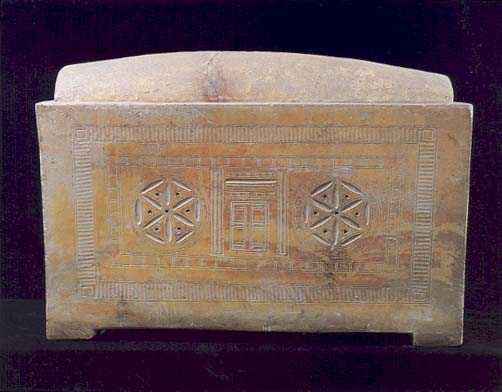Image Details

Zev Radovan/Hebrew University Institute of Archaeology
According to some scholars, the Temple was not represented visually until long after it had been destroyed by the Romans in 70 C.E. Author Asher Grossberg contends, however, that the structure on this ossuary, found with seven other ossuaries in a cave-tomb in southeastern Jerusalem, matches descriptions of Herod’s Temple by Josephus (c. 37–100 C.E.) and in the Mishnah. In those sources, the Temple had three main rooms: a wide Portico leading to a narrower Sanctuary, which in turn led to the Holy of Holies. The Temple’s entrance was a large doorless portal, allowing those outside to see through to the Sanctuary’s doors. Above this portal, five wooden beams, separated by courses of ashlars, formed a trapezoid shape; and on each side of the portal were two columns. Our ossuary also has columns and a lintel of beams and ashlars—suggesting, for Grossberg, that it shows a view of the Temple through its open portal to the closed doors of the Sanctuary.
There is another piece of evidence: Several names inscribed on ossuaries found in the same cave-tomb as the Yehosah ossuary are associated with contemporaneous priestly and Levite families. If this cave-tomb belonged to a priestly family, its members may well have decorated their ossuaries with images of the Temple they served.
